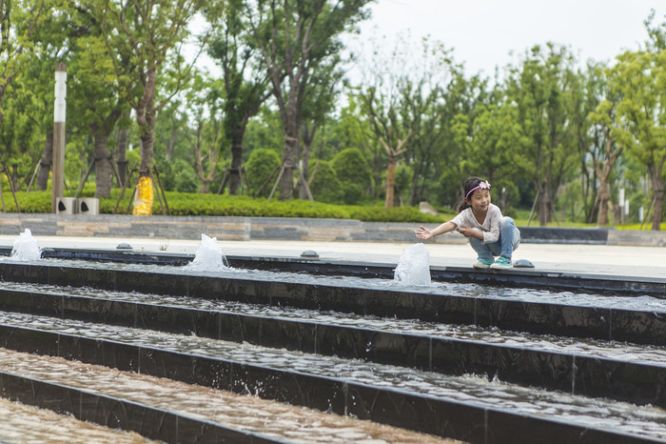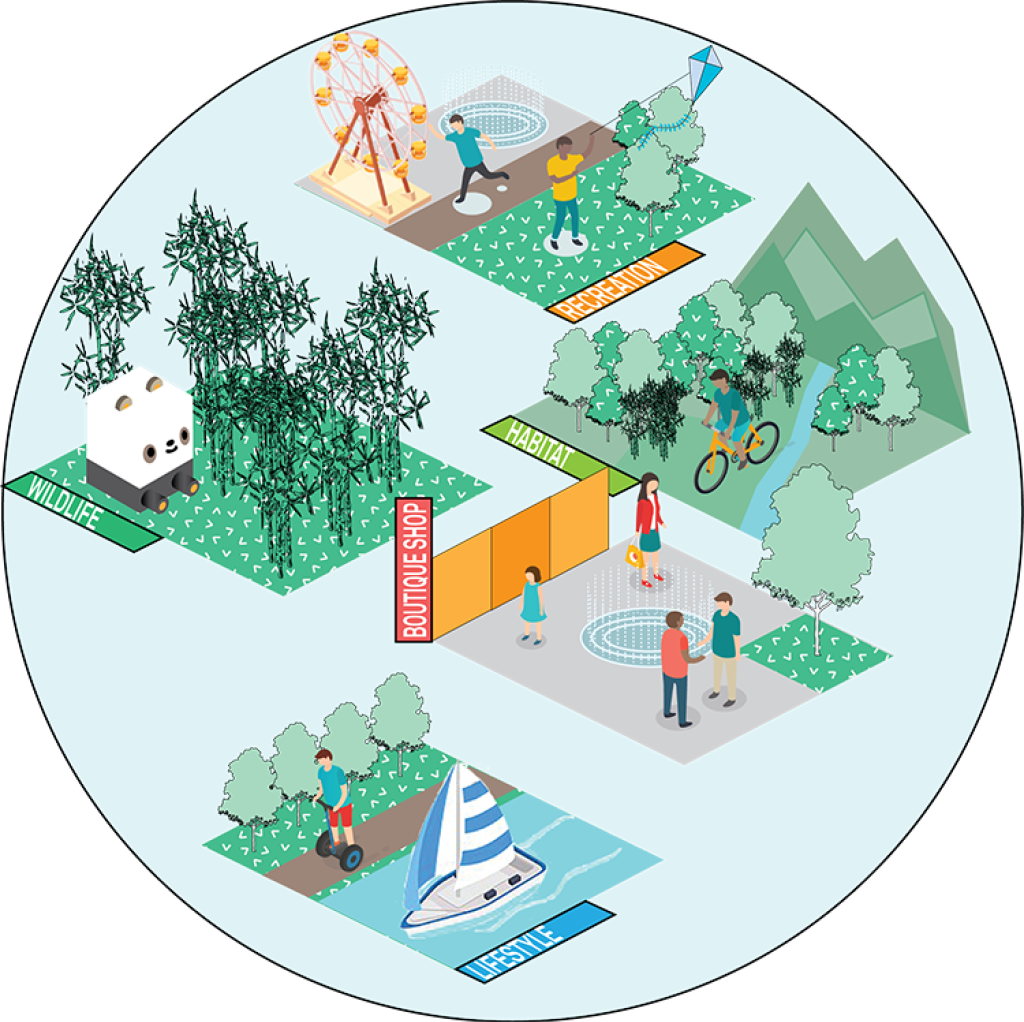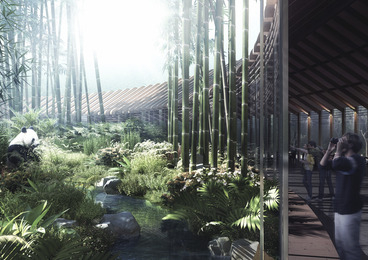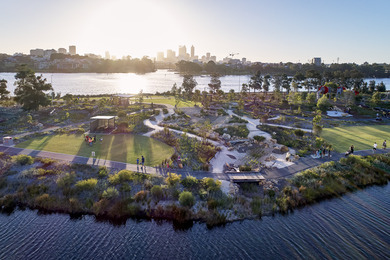Sustainable tourism
The parkland design regenerates native vegetation and creates micro eco-systems that will foster the local habitat.
A cleansing, bio-retention waterway will treat site run-off to support the health of the natural environment and the sustainable operation of the park.
An evolving design
The museum plaza opened to the public in 2015, and we are currently working on design development for the Tangshan Ape-man Cave Park surrounding the excavation site.
Construction of the wider parkland is progressing in stages, with feature gardens inspired by each period of the Paleozoic era part of the plan. From the rocky microbial soil crust of the Cambrian landscape through to the Silurian wetlands and Carboniferous swamp forest, the plants and elements within these sensory gardens will capture the essence of ‘prehistoric’ times.
Awards
- 2016 Winner ‘Australian Institute of Landscape Architects National Awards – Award of Excellence – International’
- 2014 Winner ‘Hong Kong Institute of Landscape Architects – Silver Award – Landscape Conceptual Design’















